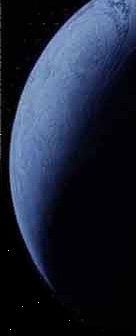
|

 |
Why
have you chosen the name KEO? |

 |
Why have
you chosen to send "this souvenir of Humanity" in space
rather than burying it under the earth? |

 |
Why 50,000
years? |

 |
What are
the possible risks of collision with meteorites and debris? |

 |
Can KEO's
safe and sound return to Earth in 50,000 years be guaranteed? |

 |
Even if
the satellite survives in space for 50,000 years, how would we know
that our messages are intact? |

 |
How would
our future descendants be able to read our messages? |

 |
Do we
need to pay anything to participate in this project? |

 |
When can
we start sending in our messages? |

 |
Can we
write everything we want ? |

 |
Can we
also send drawings, photos, sounds...? |

 |
What
about those people who are illiterate? |

 |
What
about those people who do not have access to the Internet? |

 |
In which
language will the messages be preserved? |

 |
Can we
consult the content of the messages? |

 |
How is
this project financed? |

 |
What
energy resources will KEO utilize? |

 |
Can we
communicate with KEO during its flight? |

 |
Why does
KEO have wings? |

 |
Keo
being a passive satellite, how can it move its wings? |

 |
How will
the information forming the "Contemporary Library of Alexandria"
be chosen? |

 |
When
will KEO be launched? |

 |
Next steps? |

 |
To
what extend can KEO be useful from today? |
 |
Jean-Marc
Philippe, the creator of KEO replies to you:
|

 |
Why
have you chosen the name KEO? |
| |
It
was necessary that the name of the project reflected its spirit
of sharing and exchange between all people. This name had to be
acceptable by all people irrespective of their age or culture. Since
no such example of universality existed in our past or our local
mythologies, one partner came up with the idea to research the sounds
(phonemes) common to the most widely spoken languages today and
to choose the ones that are used most frequently: [k], [e], and
[o]... and hence was born KEO, a name that is pronounceable by all
cultures.
|
 |

 |
Why
have you chosen to send "this souvenir of Humanity" into
space rather than to bury it under the earth? |
| |
Space
appeals to the human imagination and KEO is addressed to the imagination
of each one. Moreover, if we would have decided to bury this Fresco
of Messages, we would have had to select a place, a country... whereas
space belongs to everybody... or nobody.
KEO will certainly encounter dangers in space but will be immune
to any catastrophe on Earth. In fact if there was any calamity to
occur, KEO would indeed play the role of a guardian of this "souvenir
of Humanity."
|
 |

 |
Why
50,000 years? |
| |
50,000
years is the mirror date to a milestone in the evolution of our
species: the first traces of Art reveal the human capacity for abstract
thought and symbolic expression.
50,000 years is distance in time so compelling that it forces us
to shed our worries and daily routine and puts us each on an equal
footing, inviting us to bask in our thoughts, intuitions and deepest
convictions...
However 50,000 years only represent 1% of the evolution of the human
species that have appeared on Earth some 5 million years ago.
It is also the concept of time and distance that will give our treasures
a genuine archeological value because it is very probable that definitive
traces of the activities of the Man of today will be in turn recovered
by the Man of tomorrow.
|
 |

 |
What
are the possible risks of collision with meteorites and debris? |
| |
The
main risk for KEO is the possibility of a collision with micrometeorites
or space debris of human origin. This is the reason why the core
of KEO is protected by several layers of shields made from aluminum,
titanium and tungsten, that are separated by a vacuum.
Nevertheless, if the pollution of human origin in space continues
to grow at its present level over the next fifty years (+5% per
annum), KEO would have practically no chance of survival.
There is no doubt, however, that restrictive measures will be taken
to prevent this, since space debris is not only endangering the
operation of costly military, scientific and commercial satellites,
but more importantly, threatening the lives of astronauts in space
shuttles and stations. Thus, the big spatial groups like the
NASA or the ESA are already developing programmes to "clean"
this debris. This is the reason why we consider this risk as non
significant.
|
 |

 |
Can
KEO's safe and sound return to Earth in 50,000 years be guaranteed? |
| |
A technical
feasibility study carried out during the years 1996-1997 concluded
that KEO's safe and sound return to Earth in 50,000 years was possible.
This means that KEO has reasonable chances of attaining its objective
as that of an interplanetary missions being launched today. For
this, KEO takes advantage of our present day capabilities in precision
design, technological mastery of capsule re-entry and uses materials
that have demonstrated their durability in nature (eg. Titanium,
Tungsten).
(For more information, you could refer to the site, www.keo.org
and download 3 pages in English that talk about the technical feasibility
of the project at the 48th International Astronautical Congress,
Turin, October 97.)
|
 |

 |
Even
if the satellite survives in space for 50,000 years, how would we
know that our messages are intact? |
| |
In
July 1998, the National Grand Accelerator of Heavy Ions (GANIL)
conducted an experiment whereby glass disks on which our messages
will be engraved were exposed to intensive radiation. The experiment
showed that the disks and their data remained intact even after
they were exposed to an equivalent amount of cosmic radiation that
they will undergo in 50,000 years.
|
 |

 |
How
would our future descendants be able to read our messages? |
| |
It
is evident that what is a "must" in our technology today
-a Laser reader- will be totally obsolete in the future. However,
due to its volume and innate fragility, a DVD disk reader cannot
be included in KEO's payload. Therefore we are currently working
on creating diagrams bearing simple symbolic explanations on the
construction of a DVD disk reader in order to make it possible for
our future descendants to access the contents of the disks. Following
the example of the Rosetta Stone, this information will be repeatedly
made available to them such that it is clear and easy to decode.
|
 |

 |
Do
we need to pay anything to participate in this project? |
| |
No.
KEO is an operation that is open to everybody free of cost.
In order to make it possible for everybody to participate, we have
managed to restrict the cost of individual participation to the
cost of an Internet connection or a postal stamp to send the message.
|
 |

 |
When
can we start sending in our messages? |
| |
You
can send your message right now, either via Internet at our site
www.keo.org by visiting the page titled "Your Message"
or by post to: KEO, BP
100 - 75262 PARIS Cedex 06 - France.
|
 |

 |
Can
we write everything we want ? |
| |
Yes,
each of us has 4 pages of freedom at his or her disposal to speak
out, without undergoing any censorship and fully decide of the message's
content. The only limit is not to exceed 6 000 signs, spaces included,
that is to say the equivalent to 4 A4 size pages. This to allow
the 6 billions of Earth's inhabitants, that we are today, to have
a chance to participate into KEO. You only have the right to send
one message. Besides, in order to permit to our descendants to know
better who we were, some information fields have to be filled out:
birth date, gender, mother tongue, language of the message… and
others are optional, such as name, first name…
|
 |

 |
Can
we also send drawings, photos, sounds...? |
| |
No,
only written messages will be accepted. Drawings, photos and sound
are heavy consumers of disk memory and would not permit each person
living on this planet to express himself. Keeping in mind the physical
constraints of the memory space, a certain form of restriction or
censorship would have been necessary. This contradicts the spirit
of the project that is collectively open to everybody. However since
images and sound form an integral and important constituent of our
times, they will be represented in the "Contemporary Library
of Alexandria" (The Encyclopedia of all the knowledge, habits
and customs of the man of the 21st century).
|
 |

 |
What
about those people who are illiterate? |
| |
KEO
depends essentially on the human solidarity to receive messages
from those people who are illiterate.
We are currently working with several international networks to
publicize the project and help in the collection of messages.
When a child hears about KEO at school, on television, in the library,
or at the dispensary, we hope that he talks about this to his parents
or his grand parents. If anybody amongst them do not know how to
write, don't you think that this child would pen down their oral
message?
|
 |

 |
What
about those people who do not have access to the Internet? |
| |
If
you do not have your own Internet access you may try and find it
in the neighborhood-at a friend's place, at a cyber cafe, at the
library, at school or at the city hall. Or you may address your
message by regular post at: KEO, BP
100 - 75262 PARIS Cedex 06 - France.
|
 |

 |
In
which language will the messages be preserved? |
| |
The
messages will be stored in the author's original language, the language
that he has chosen to express himself.
|
 |

 |
Can
we consult the content of the messages? |
| |
Yes, all the messages, after being made anonymous, will be made available for consultation. We ourselves are looking for a wide coverage and readership of the messages. We believe that without a real exchange of messages between us, KEO will never completely attain its goal.
In fact even though KEO constitutes a formidable gift for the future generations, its real interest lies in the impact it will have on us today.
Slowly and gradually as the messages arrive they will be stocked in secured databases which will be made accessible via the Internet after the launch of KEO. Each person can thus can inquire about the community of Men in Africa, America, Australia, Asia and Europe...
|
 |

 |
How
is this project financed? |
| |
KEO
is a non-profit undertaking which is being realized solely through
the benevolent contributions of several professionals, individuals,
enterprises and institutes who pool in their knowledge free of any
charge.
Thus, Programme KEO being an ethically transparent organization
can avoid all criticism regarding better usage of resources for
other objectives such as humanitarian goals.
Only the Project Co-ordination Team of Programme KEO that works
full time to manage the different activities and participants has
to find ways of financing its daily operations.
|
 |

 |
What
energy resources will KEO utilize? |
| |
KEO
does not have its own energy. It is a passive satellite which means
that it does not contain any energy sources or active instrumentation
on board. Once injected into the orbit, it is only subject to the
laws of nature (ballistic forces, terrestrial attraction, lunar
and planetary, pressure from solar radiation and breaking due to
the Earth's residual atmosphere), that will be responsible for its
long journey of 50,000 years before it returns to its native soil.
|
 |

 |
Can
we communicate with KEO during its flight? |
| |
No,
because KEO is a passive satellite and once launched into the orbit,
it can no longer be contacted. Since it will be orbiting around
1,800 km above the Earth it will be possible to view its flight
with the help of powerful optic telescopes. On the other hand to
survive 50,000 years KEO has to be made up only of stable materials:
interactive materials like batteries which would have permitted
us to communicate with it, would have endangered its life due to
their unpredictable decomposition.
|
 |

 |
Why
does KEO have wings? |
| |
Purely
for symbolic reasons is KEO adorned with two big wings. This image
will appeal to the human imagination as a mythical figure of a bird
that is the messenger of the people of the 21st century.
|
 |

 |
Keo
being a passive satellite, how can it move its wings? |
| |
To
allow its wings to flutter, KEO uses a leading-edge technology "shape
memory alloys". These are metallic alloys that are able to
assume different shapes according to different temperature ranges
and revert to their original shapes each time they are brought back
under their original temperature.
Thus KEO's wings will go down each time the satellite enters the
Earth's cone of shadow, and go up as soon as KEO encounters direct
sunlight again. Therefore, no form of energy is needed to make KEO's
wings function.
|
 |

 |
How
will the information forming the "Contemporary Library of Alexandria"
be chosen? |
| |
A "Committee
of Learned People" multicultural, multidisciplinary and multidimensional
has the responsibility of classifying all information, geopolitical
and cultural (translating our habits and customs) of the people
of the 21st century for the benefit of our future descendants.
|
 |

 |
When
will KEO be launched? |
| |
In accordance with the non-profit philosophy of the project, the satellite will be launched as a “secondary passenger”. Therefore it is dependant on the launching of a commercial or scientific mission whose orbit fits KEO’s one. According to the projected development plan of Ariane 5/10 tons launcher, the first possible launching range takes place around 2014 / 2015 .
|
 |

 |
Next steps? |
| |
 The first decisive step is to validate the project financing, via one or more benefactors.( step in process). The first decisive step is to validate the project financing, via one or more benefactors.( step in process).
When this is achieved, we will be at the date which will be called T0 (T zero ).
 From TO : creation of the project team, composed of full-time staff, led by an expert project management company . From TO : creation of the project team, composed of full-time staff, led by an expert project management company .
Establishment of the team in an allotted place and working out of the project detailed planning.
 At T0 + 3 months : laun ch of the communication campaign to collect as many messages as possible, from all peoples, in all languages of the Earth. At T0 + 3 months : laun ch of the communication campaign to collect as many messages as possible, from all peoples, in all languages of the Earth.
Length of the campaign. 2 years.
 At T0 + 6 months : launch of the technical project to carry out the KEO capsule and to integrate it in a launcher to choose. This will be done by expert companies in this field, financed from the KEO program budget achieved at T0. At T0 + 6 months : launch of the technical project to carry out the KEO capsule and to integrate it in a launcher to choose. This will be done by expert companies in this field, financed from the KEO program budget achieved at T0.
Duration of capsule construction: 2 years, then 6 months for launcher integration.
 At T0 + 27 months: Closing the collection of messages that are then assembled in the CD to be loaded onto the capsule KEO. At T0 + 27 months: Closing the collection of messages that are then assembled in the CD to be loaded onto the capsule KEO.
 At T0 + 30 months : c apsule ready to be incorporated into the launcher to be thrown into space. At T0 + 30 months : c apsule ready to be incorporated into the launcher to be thrown into space.
 At T0 + 36 months :
providing, in an anonymous way, all messages carried out by KEO on the KEO website At T0 + 36 months :
providing, in an anonymous way, all messages carried out by KEO on the KEO website
|
 |

 |
To
what extend can KEO be useful from today? |
| |
When
KEO will be put on into orbit, all the messages received will be
freely accessible on the site www.keo.org , under an anonymous form.
Though, if one takes one reading minute for each page, it would
take ten sleepless years to read only one million of messages! That
is why all the messages will be analysed with computer based linguistic
tools, so as to answer this double question : "who are we?", "what
could we do together to realise a more human world?".
|
| |




















